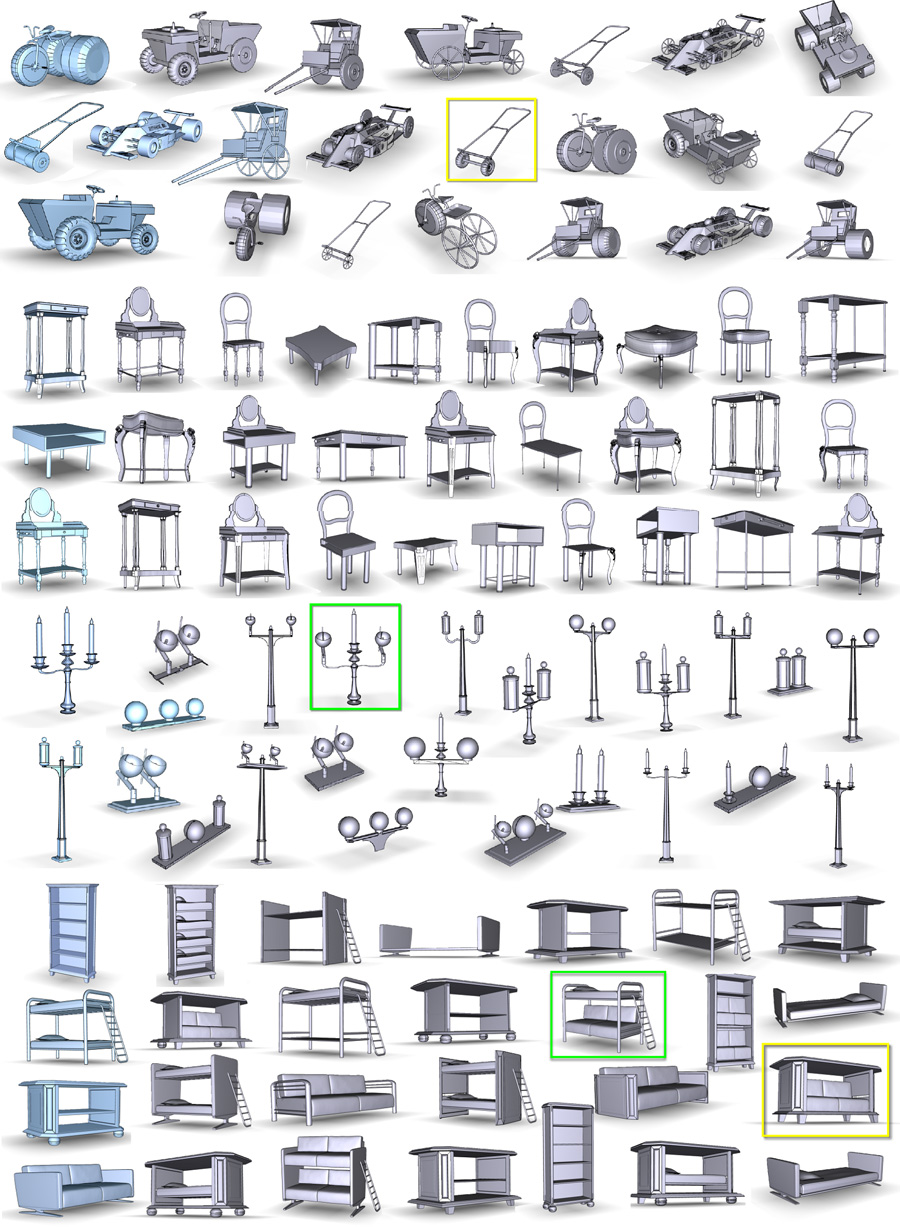

Abstract:
As collections of 3D models continue to grow, reusing model parts allows generation of novel model variations. Naïvely swapping parts across models, however, leads to implausible results, especially when mixing parts across different model families. Hence, the user has to manually ensure that the final model remains functionally valid. We claim that certain symmetric functional arrangements (SFARR-s), which are special arrangements among symmetrically related substructures, bear close relation to object functions. Hence, we propose a purely geometric approach based on such substructures to match, replace, and position triplets of parts to create non-trivial, yet functionally plausible, model variations. We demonstrate that starting even from a small set of models such a simple geometric approach can produce a diverse set of non-trivial and plausible model variations.
 Results demonstrate the support SFARR. Starting from six different shapes from different families, our framework
produces dozens of non-trivial variations, yet preserving functional plausibility. In green, we highlight some tables that were
ranked as interesting; in yellow, we highlight some tables that were ranked as functionally unsatisfactory; in red, we highlight
tables that are physically unstable.
Results demonstrate the support SFARR. Starting from six different shapes from different families, our framework
produces dozens of non-trivial variations, yet preserving functional plausibility. In green, we highlight some tables that were
ranked as interesting; in yellow, we highlight some tables that were ranked as functionally unsatisfactory; in red, we highlight
tables that are physically unstable.
 Reshuffling results among various object families consistently indicate that the proposed SFARR-s can synthesize
non-trivial shape variations across classes, while maintaining plausible functionalities of the objects.
Reshuffling results among various object families consistently indicate that the proposed SFARR-s can synthesize
non-trivial shape variations across classes, while maintaining plausible functionalities of the objects.
Video:
Acknowledgements:
Bibtex:
@article{zcm_sfarr_eg13,
AUTHOR = "Youyi Zheng and Daniel Cohen-Or and Niloy J. Mitra",
TITLE = "Smart Variations: Functional Substructures for Part Compatibility",
JOURNAL = "Computer Graphics Forum (Eurographics)",
volume = {32},
number = {2pt2},
pages = {195--204},
YEAR = "2013",
numpages = {10},
}
|
|